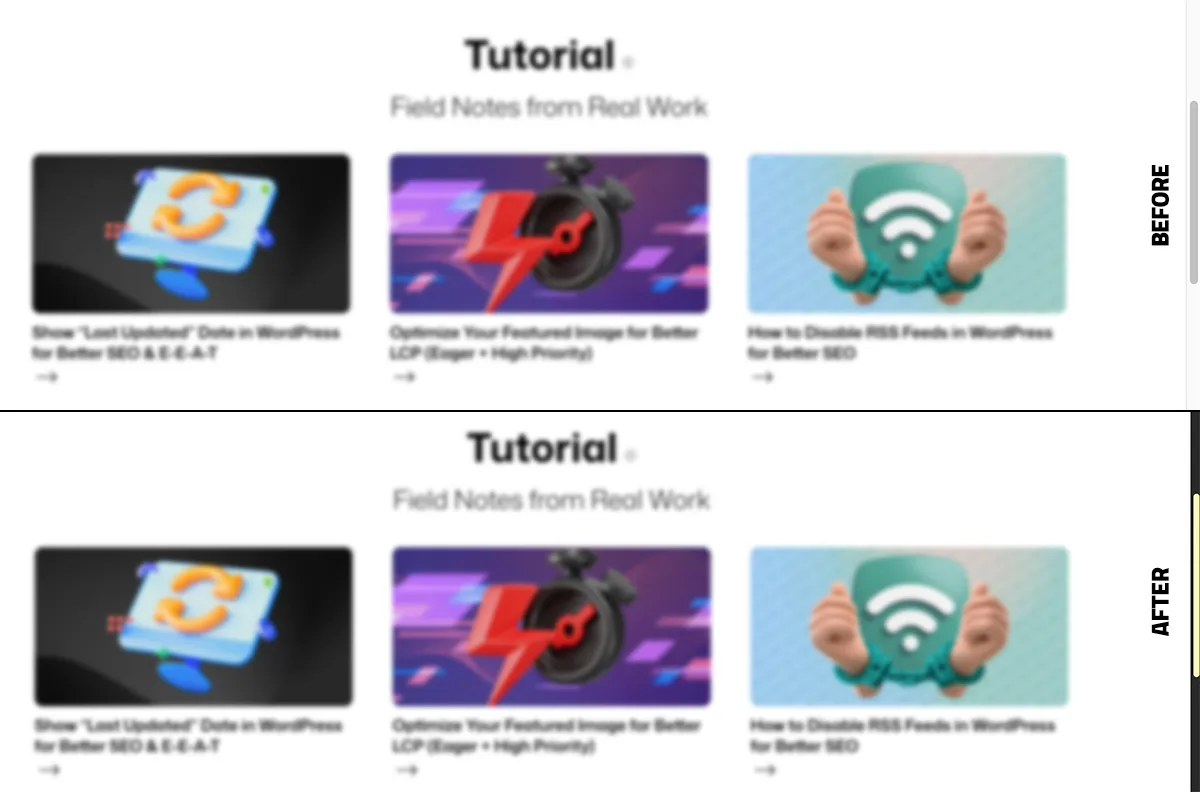Responsive Desktop-Only Scrollbar Styling
Mobile browsers such as Safari (iOS) and Chrome (Android) either hide the scrollbar or render it as a transparent overlay, which means CSS customization doesn’t apply there.

To keep the mobile experience clean and consistent, you can restrict your custom scrollbar to desktop screens only using a simple media query:
@media (min-width: 1024px) {
:root {
--scrollbar-track: #292929;
--scrollbar-thumb: #fff9b1;
}
html {
scrollbar-width: thin;
scrollbar-color: var(--scrollbar-thumb) var(--scrollbar-track);
}
::-webkit-scrollbar {
width: 10px;
}
::-webkit-scrollbar-track {
background: var(--scrollbar-track);
}
::-webkit-scrollbar-thumb {
background-color: var(--scrollbar-thumb);
border-radius: 6px;
}
}
Where to add the code
You can safely paste this CSS snippet inside your theme’s Additional CSS section
(WordPress Dashboard → Appearance → Customize → Additional CSS),
or include it in your theme’s main stylesheet (style.css).

Customize Colors Easily
Since we used CSS variables, you can change the look by editing only two lines:
:root {
--scrollbar-track: #111;
--scrollbar-thumb: #00bcd4;
}
- The track represents the background area where the scrollbar moves — like a rail.
- The thumb is the draggable part that indicates the current scroll position.
You can adjust these two colors anytime without touching the rest of the code.

